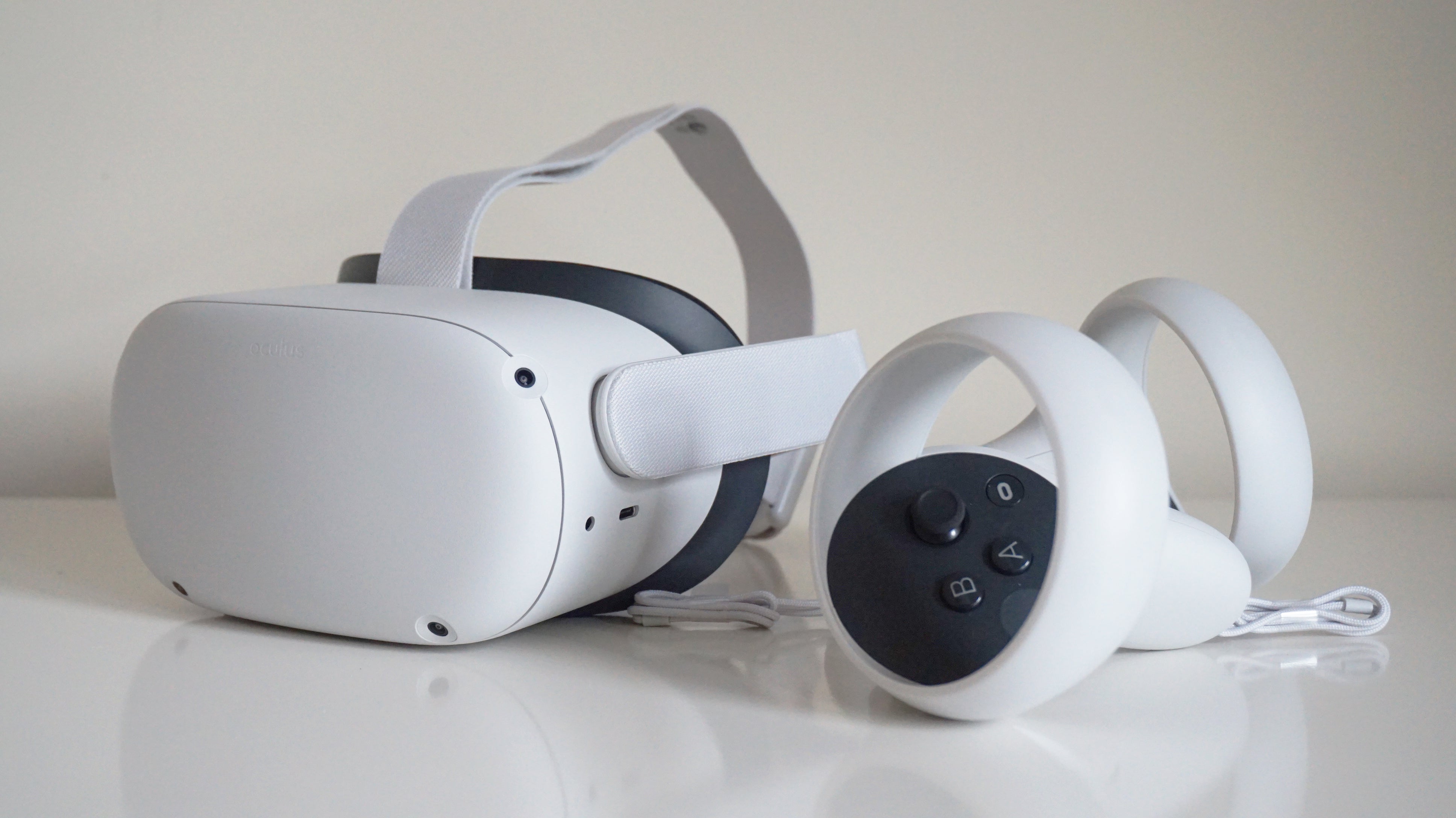Oculus Quest 2 Headset Review
Please note, as an Amazon Associate I earn from qualifying purchases.
Oculus tinkered with standalone virtual reality with its Go headset, but it wasn’t until the Quest that the company really nailed a genuinely immersive VR experience without any cables. The Oculus Quest 2 follows in the footsteps of its predecessor, but with a more powerful processor, a sharper screen, and a lighter design. It does all of this for just $299.99, a full $100 less than the original Quest and significantly lower than competitors like the $699 HTC Vive Cosmos.
The Quest 2 is a bit smaller and lighter than the original, weighing 17.7 ounces and measuring 4.0 by 7.5 by 5.6 inches (HWD), not including the strap. The smooth plastic chassis of the headset is white, with the plastic and foam eye mask behind it a contrasting black. The front faceplate is nearly bare, with four position-tracking cameras mounted along its edge.
The left side of the headset holds a USB-C port and a 3.5mm headphone jack, while the right side is home to the power button and an indicator LED. A volume rocker can be found on the underside of the headset, along with two pinhole microphones. The eye mask easily pulls out to let you adjust the position of the lenses, or to insert the included separator that lifts the headset slightly away from your face so you can comfortably use it with glasses. Even with the separator, however, glasses can feel awkward if you have particularly large frames.
The original Oculus Quest was a VR breath of fresh air with its 6DOF head and controller tracking, strong performance, and, most importantly, standalone functionality. The Quest 2 is an upgrade in every way, with a lighter design, a sharper display, and a faster processor, all at a more affordable price than the original. For $300, it’s the best all-in-one package for using VR, with optional accessories for PC tethering and to double the battery life of the headset.

